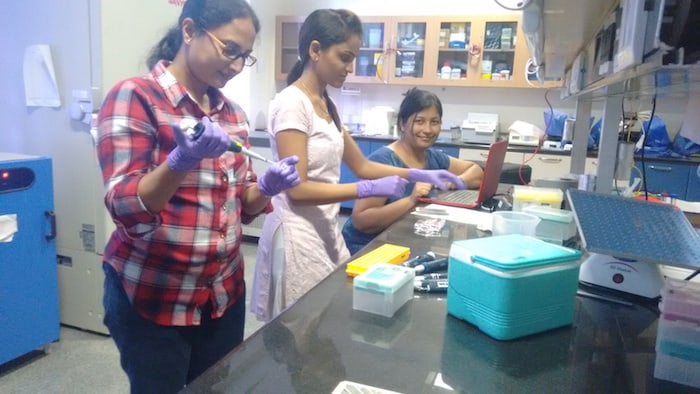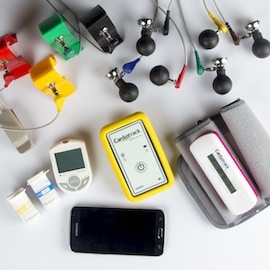India’s Health Challenges and Would-Be Solutions – From Human to Artificial Intelligence
By 2030, India’s population of people age 60 or older is projected to grow by 64 percent. Also by 2030, India’s urban areas are expected to more than double their current population levels.
As a result, India will witness an epidemiological paradigm shift from communicable diseases to non-communicable diseases (NCDs) with a mortality rate of 21 percent versus 79 percent, respectively. Additionally, factors such as an increase in income levels, increases in health care insurance penetration, increases in private and public health care expenditure and rising consumer awareness will shape the future of the health care sector in India for the coming decades. Total spending on health care has increased at double-digit rates and accounted for 4 percent of GDP in 2013. However, government spending still remains low at 1.3 percent of GDP, making private expenditures as high as 2.7 percent of GDP in 2013.
This all adds up to a health care industry estimated to reach USD 280 billion by 2020.
These macro level trends will translate into specific problem areas, several of which are highlighted below, where indigenous inventions as well as capacity-building interventions are required for prevention, diagnosis and treatment. In addition to the trends we’re watching, several companies within Villgro’s portfolio (as well as some outside of it), are developing promising solutions. (Note: The author is employed by Villgro, an Indian social business incubator.)
Trends, companies to watch
1) Point-of-care diagnostics for a dual disease burden: India faces a dual disease burden. While the country has witnessed an increase in chronic disease, it still hasn’t overcome challenges posed by infectious diseases and undernutrition. Decentralization of diagnostic testing, from high-end labs to primary health care settings, needs to be facilitated through POC diagnostic technology. Diagnoses that occur real-time, provide higher levels of accuracy, can be used by low skill level employees, all at an affordable price, have the potential to completely turn around clinical diagnostics. Rapid diagnostic tests have had a significant impact on screening for malaria and HIV. However, many still lack sufficient sensitivity and specificity. Additionally, growing antimicrobial resistance needs to be tackled with higher diagnostic accuracy, possibly through personalized medicine at the genomic level.
Examples: Villgro portfolio companies including Biosense, Aindra Systems and Omix Labs (pictured below) are developing affordable point-of-care diagnostic solutions.

2) Chronic disease management: Decentralizing and personalizing health care to manage chronic diseases like TB and diabetes using digital intervention and patient/family awareness of therapies and consequences is crucial. Asset-heavy hospitals may see their roles changing, focusing more on critical/specialty care whereas monitoring and follow-ups will be done through remote technologies using digital health as their backbone. Home health care will continue to rise at 20 percent annually given the aging population and relaxed regulatory environment in India; training the workforce will remain a challenge in the absence of larger certification programs.
3) Last mile delivery: Bringing preventive, diagnostic and therapeutic technologies to the remote rural settings is and will continue to be the biggest challenge. Effective public-private partnerships (such as Wish Foundation, Karuna Trust) and telemedicine businesses (such as Practo and Meradoctor) will increase access to health care in tier-2 and tier-3 cities and rural areas. In India’s context creating universal access should be the primary goal with a focus on quality and efficiency.
Example: Sevamob is providing primary health care in remote areas through mobile clinics.
4) Preventive vaccines and other prevention methods: Eradicating HIV/Aids, malaria and TB through effective vaccines requires advances to handle complexities of pathogens causing these diseases. There is a need for new and innovative approaches to clinical trials that will accelerate availability of such vaccines. While we know that “an ounce of prevention is worth a pound of cure,” prioritizing future health is still a challenge to be overcome with awareness around lifestyle, hygiene, nutrition and vaccines.
Key Enablers
The following are key enablers that will help build solutions for the macro problems mentioned above:
1) Artificial intelligence: In some ways reinvention of medicine is around the corner through algorithms and machine learning. As proposed in the book Race Against the Machine, the core functions necessary for complex diagnoses, treatment and monitoring increasingly will be driven by machine judgment backed by human validation.
Examples: AIndra Systems, a Villgro portfolio firm, is developing AI-based interventions to address issues with long turn-around times, shortage of skilled diagnosticians and accuracy in results for early-stage diagnosis of cervical cancer. VectorDoc, also in the portfolio, has developed an AI-based app for triage and preliminary diagnosis.
2) Digital health: A completely new industry will slowly emerge that will be different from the current electronic medical records in the way patient and hospital resource data is analyzed for decision making. Additionally, digital health will leverage big data analytics, cloud and social media to support telemedicine and remote-ICUs to enable last mile delivery.
3) Skilled health care providers: By 2020, the Indian health care sector is expected to generate close to 7.5 million new job opportunities. However, there is still a huge gap in supply which needs to be addressed by improving the quality of health care education, specifically for 50 percent of the medical workforce that practices outside the formal medical system. A few examples include health care support professionals such as lab technicians and specialized nurses.
Today’s needs
Shifting gears from future trends, let’s conclude by bringing our focus back to some specific medical innovations that India requires today that are relatively lower on the level of difficulty in deployment but remain largely unsolved:
1) Maternal and child health kit to diagnose for critical conditions during pregnancy including anemia, infectious diseases like malaria, HIV, syphilis as well as hypertensive disorders.
Examples: Biosense (anemia screening), Bempu (continuous infant temperature monitoring, pictured below) and Windmill Health (neonatal resuscitator) – all Villgro portfolio firms.

2) Cold chain for vaccines and pharmaceuticals that are temperature sensitive to enable effective delivery and storage in remote, low-resource settings without reliable power.
3) Platform for POC, automated immunoassays and nucleic acid tests to screen and diagnose for a wide range of diseases and provide effective treatment based on target species.
Example: Omix Labs is developing a point-of-care platform that allows for cost-effective DNA testing for pathogens.
At Villgro, we are excited to be part of this fast-growing industry. Within this sector, Villgro’s investment strategy strikes a balance between capacity-building innovations to keep up with epidemiological shifts as well as high priority interventions of the present day with a sharp focus on scalable business models that keep the BoP population as the primary focus.
Top image: Biosense, a Villgro portfolio company, provides point of care diagnostic services. All images courtesy of Villgro.
Aina Gaur is an investment manager at Villgro and Menterra with a focus on health care.
- Categories
- Health Care



